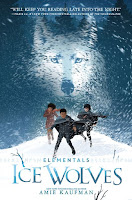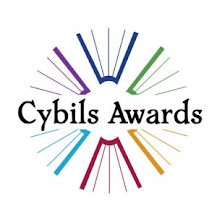Every summer, Rose goes with her mom and dad to a lake house in Awago Beach. It's their getaway, their refuge. Rosie's friend Windy is always there, too, like the little sister she never had. But this summer is different. Rose's mom and dad won't stop fighting, and when Rose and Windy seek a distraction from the drama, they find themselves with a whole new set of problems. One of the local teens - just a couple of years older than Rose and Windy - is caught up in something bad... Something life threatening.
It's a summer of secrets, and sorrow, and growing up, and it's a good thing Rose and Windy have each other.
This One Summer is a tremendously exciting new teen graphic novel from two creators with true literary clout. Cousins Mariko and Jillian Tamaki, the team behind Skim, have collaborated on this gorgeous, heartbreaking, and ultimately hopeful story about a girl on the cusp of childhood - a story of renewal and revelation.
Rose and her parents head to the lake every summer – it’s tradition. It’s where Rose sees Windy, her friend and surrogate little sister, every year. This year’s visit is different, though. Rose is in that in-between stage between kid and teenager, and the atmosphere at the lake is fraught with tension. Her parents might be fighting. Her friendship with Windy doesn’t hold as much appeal. The locals have their own drama. And while secrets are being traded and/or coming to light, Rose and Windy are growing up.
This One Summer is an award-winner, and for good reason. It’s a beautifully-written and -illustrated coming of age tale. Rose and Windy are entirely believable characters and friends. Rose is on the cusp of womanhood, with all of the angst and feeling that entails. One of the book’s strengths is the way it outlines how familiar places and social landscapes can change shape faster than you can imagine. The book also shines in its portrayal of family conflict – resolved or not. Another strong point is unpacking the words society uses for girls and women. This book does so many important things well, it’s really impressive.
This One Summer was the most banned book of 2016. And that is because the Tamakis not only told a beautiful story, but a true one. There’s so much honesty in the text and the art – and in telling a story around the sorts of secrets that are real and terrible. This One Summer is a slice of summer life as it really is, not sugarcoated, but perhaps heading in a positive direction. I would not hesitate to give this book to any child aged 11-and-up – it will spark important conversations and questions.
I mentioned the art, so let’s talk about that. It’s great! The facial expressions in particular are fantastic – rendered in blue and purple colored pencil line work on white pages. There’s visceral feeling imbued in each of the panels, and the choice of subject is subtle and tender at some of the most anxious moments. This book shines in a lot of ways, but the harmony between text and art is really fabulous.
In all, This One Summer is an incredible book, and one that should rightfully become a classic. If you haven’t picked it up yet, do yourself a favor and relive the summer-ness of it (and maybe cry a bit too).
Recommended for: fans of excellent graphic novels and anyone who enjoys affecting coming-of-age fiction, á la Melissa Walker’s Unbreak My Heart.

















